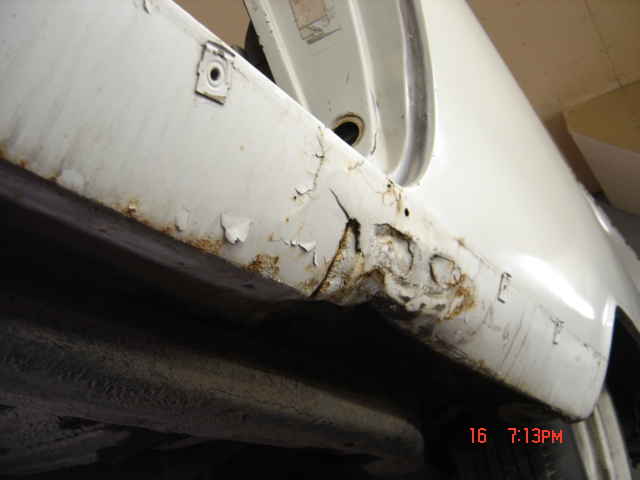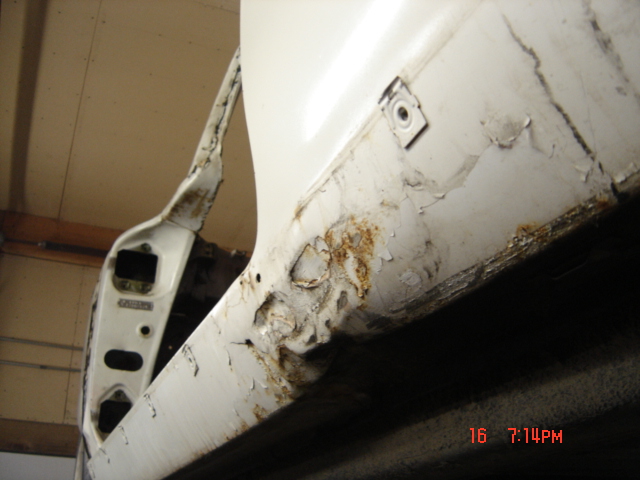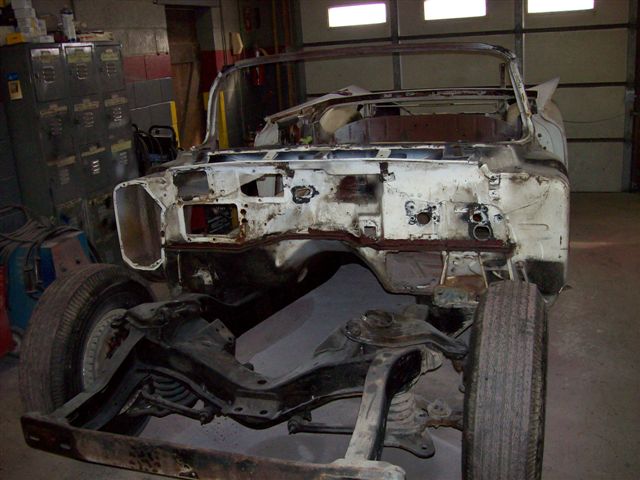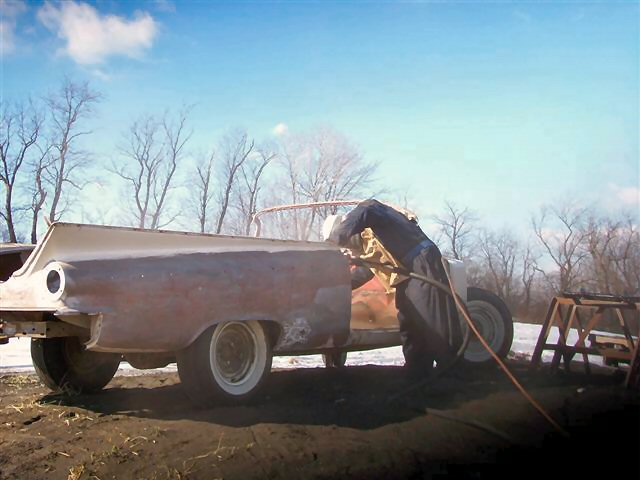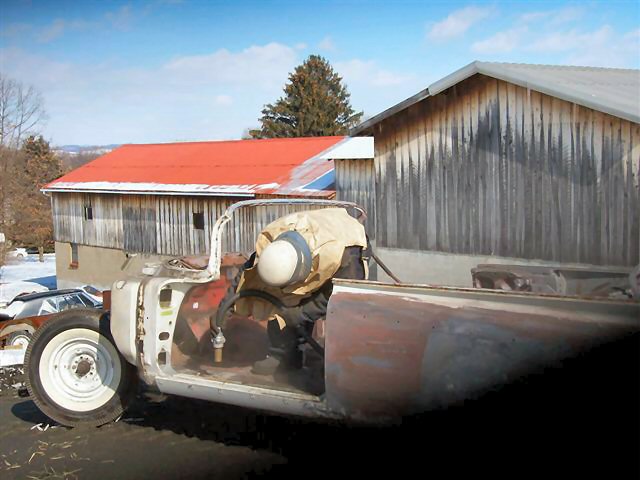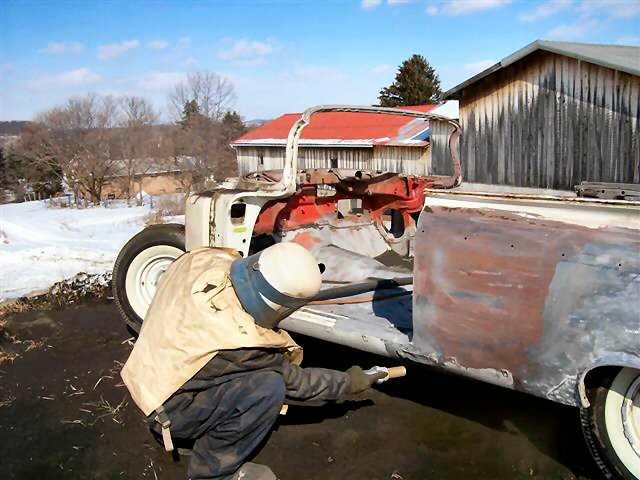Below is a little background information on how the 1959 Buick came into existence…along with a few words about the engines and transmissions for the different Buick models…
If 1959 was a year of unprecedented change for all of General Motors, Buick embodied that change more than any other division. With radical new styling and all new model names, Buick made the most dramatic break from its past by far. Puffy styling with vaulted roofs, massive bumpers and excessive ornamentation, made way for bold new “Delta Wing” styling with sleek rooflines, slender bumpers and tasteful use of chrome and stainless. Perhaps nothing demonstrated Buick’s commitment to transform itself more than its daring decision to rename all its models. Gone were the Special, Super, Roadmaster, and Limited; in their place stood LeSabre, Invicta, Electra and Electra 225. Buick’s new slogan for 1959 was, “The Car: Buick 59,” and what a car it was!
The Genesis:
The genesis of Buick’s (and all of GM’s) new design came not from the designers at GM’s vaunted Design Studio, but rather from the chance discovery in 1956 of Chrysler’s new “Forward Look” line of vehicles for 1957. The clean lines of the Chrysler vehicles made the entire GM line look dated in comparison. Not to be outdone, GM stylists began work almost immediately to create new designs. Already too late to make significant revisions to the 1958 Buick, stylists and engineers abruptly abandoned their plans to make 1959 the third evolution of the 1957 design. All five GM divisions were instead given the green light to start with a clean sheet to develop an all-new line of vehicles for 1959. This was a monumental challenge in that GM engineers were tasked to complete in less than two years a job which generally took three or more.
In an effort to streamline the process and reduce costs, the decision was made to standardize one set of bodyshells that could be lengthened or shortened for the entire GM line (except Corvette). Although each division would continue to use its own unique suspension, powertrains and exterior sheetmetal, the inner body structure consisting of cowl, windshield, greenhouse, and inner door panels would be the same for all divisions. Because Buick’s design was selected, all other GM divisions were compelled to construct their 1959 designs around the Buick inner body structure.
Time of the Essence:
Buick sold 737,035 cars in 1955 to capture third place in industry sales by outselling Plymouth, a ranking it maintained with its 1956 models. Although expectations were high that the all new 1957 Buicks would build on that success; those hopes were firmly dashed with the introduction of Chrysler’s new Forward Look vehicles of the same year. 1957 Plymouth sales shot up to 762,231 units, far outpacing Buick’s production of only 404,069 units, knocking it back down into fourth place. The overwhelming response to the new Chrysler Corporation vehicles confirmed the public’s desire for fresh new styling. With its sales rapidly falling, time was of the essence for Buick to quickly develop a vibrant new design in anticipation of reclaiming third place. As its engineers worked feverishly on the upcoming 59’s, Buick’s worst fears were realized when its stodgy 1958 offerings garnered only 240,659 sales, its worst showing in 10 years further dropping Buick into fifth place. Desperate to close the door on 1958, Buick introduced its 1959 models on September 19, 1958, the earliest release date of any new American car since the mid 1940’s
The Car:
The 1959 Buick dared go where no car had gone before and is perhaps the most spectacular Buick ever built. Never before had a GM vehicle undergone such a dramatic transformation from one year to the next. In extreme contrast to the previous year, the new Buick’s side profile emphasized its long, low and lean styling which was brilliantly accented by two simple stainless steel moldings. Its rear end was dominated by stunning sharp-edged delta wings set above circular protruding taillights reminiscent of jet exhaust ports. Four chromed rows of small beveled rectangles appearing to float in mid air made up the broad front grill. Canted headlights beneath angled stainless brows gave the 59’s a menacing face as instantly recognizable as its fabled rear. More than any other car of its era, the 59 Buick exuded motion even when standing still. If the iconic 59 Cadillac brought the definition of excess to new levels, the 59 Buick is widely acclaimed for executing the cleanest, most elegant design of any GM division.
Accolades for the 1959 Buick line included an Electra 225 Convertible being selected as the Pace Car for the 1959 Indianapolis 500, Motor Trend magazine naming the Invicta four-door hardtop as “Best Looking Car Overall”, and also naming the Invicta Estate Wagon “Best Looking Wagon” for 1959.
Transmissions:
Three transmission choices were available for 1959 Buicks. Although rarely ordered in base form, LeSabre’s came standard with a three speed manual transmission with column mounted shifter. Optionally available for LeSabres were the Twin Turbine and Triple Turbine automatics. The Twin Turbine was standard on all other models with the Triple Turbine an available option (the manual gearbox was only available on LeSabres). Although the Twin Turbine and Triple Turbine were previously marketed as Dynaflow transmissions, Buick dropped the term “Dynaflow” in 1959 perhaps in a further attempt to emphasize the clean break from its past. While both automatic transmissions were carryovers from 1958, improvements were made to both. The Triple Turbine was dropped after 1959 and working examples are as rare today as manual transmission cars. Rear end ratios for LeSabres were 3.58 with syncromesh, 3.07 for the Twin Turbine, 3.23 for the Twin Turbine with Power Pack option, and 2.78 for the Triple Turbine. All other models were 3.07 for the Twin Turbine and 2.78 for the Triple Turbine.
Engines:
Powering all 1959 Buicks were two different engines, the venerable 364-cid engine first introduced in 1957 was joined by an all new 401-cid engine. LeSabres came from the factory only with the 364, while the potent 401 was standard on all other models.
The 364-cid LeSabre engine was offered in four different versions. Base cars with the standard three-speed manual could only be had with the 364 with 8.5 to 1 compression and a 2-barrel carburetor. This low compression version used regular fuel, and although not disclosed in Buick literature, is believed to deliver 210 hp and 340 ft lbs of torque. The air cleaner snorkel of this version was emblazoned with “Wildcat” and a depiction of a leaping wildcat. The standard engine for LeSabres equipped with optional automatic transmissions was the 364 with 10.5 to 1 compression. This high compression engine required premium fuel and delivered a published 250 hp @ 4400 rpm and 384 ft lbs of torque @2400 rpm using the two-barrel Carter or Stromberg carburetor. Air cleaner markings were the same as noted above for the manual cars. LeSabres with automatic transmission could also be ordered with the optional “Power Pack.” This option consisted of a 10.5 to 1 high compression 364 requiring premium fuel and was further equipped with a 4-barrel Carter and dual exhaust system. This version delivered a published 300 hp @ 4600 rpm and 405 ft lbs of torque @ 2400 rpm. Markings on the air cleaner lid consisted of dual opposing “Wildcat” lettering above dual opposing leaping wildcat depictions. One final version of the 364 was produced for the export market. This was a low compression engine for automatic transmissions that used regular fuel and delivered 235 hp and 375 ft lbs of torque. Although not technically a US production option, it is possible that this engine could have been special ordered, possible air cleaner markings are unknown at this time.
The all new 401-cid engine was offered in only one version with 10.5 to 1 compression. This high compression engine required premium fuel and delivered a published 325 hp @ 4400 rpm and a whopping 445 ft lb of torque @ 2800 rpm. This was the most powerful engine ever offered by Buick to that point. The air cleaner lid was emblazoned with dual opposing “Wildcat 445” lettering (for the torque rating) above dual leaping wildcat depictions. Dual exhaust was standard on Electra and 225 models, and optional on all other models.
